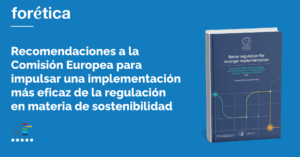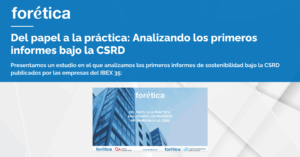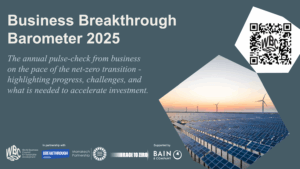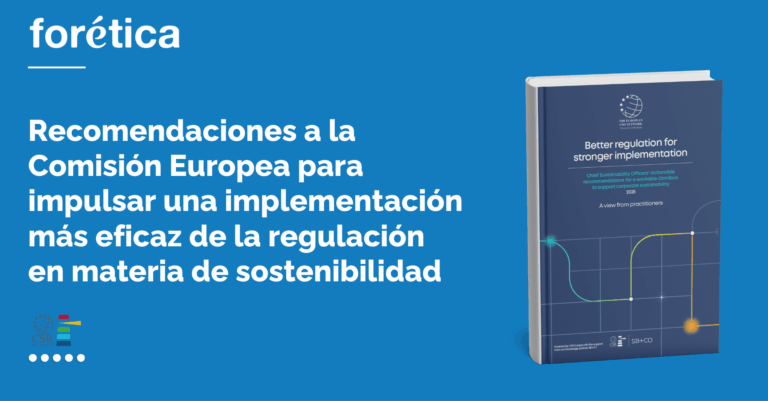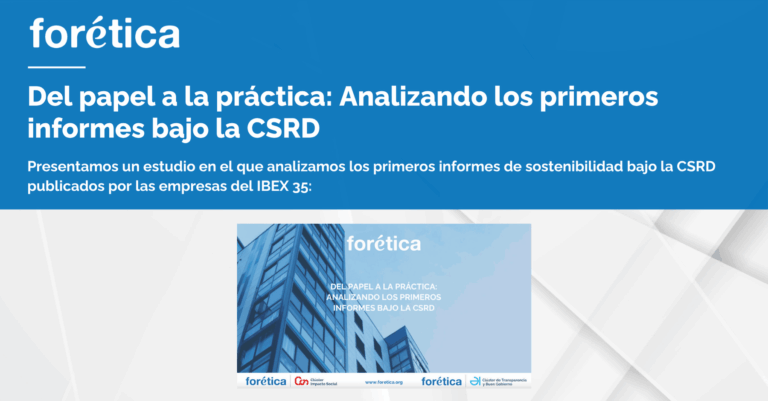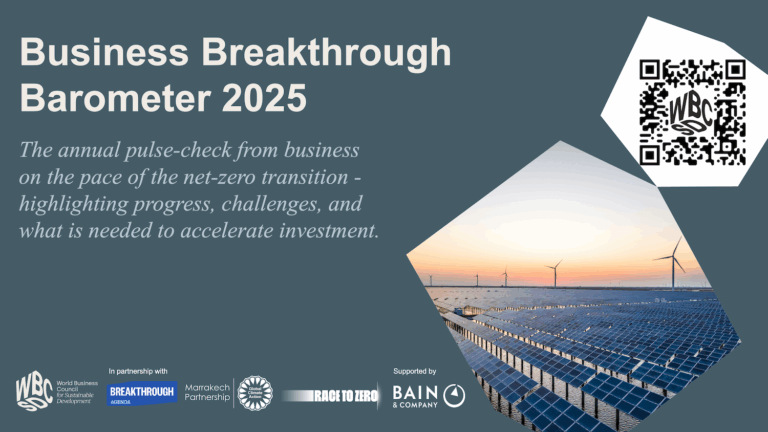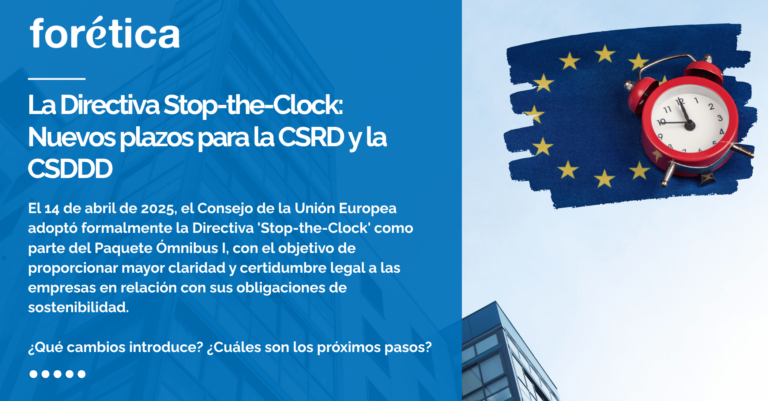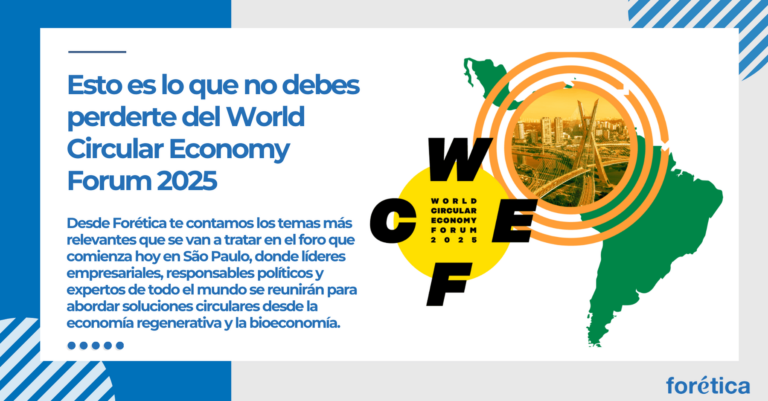Entre el 6 y el 17 de noviembre se ha celebrado en Bonn la COP 23 de la Convención de las Naciones Unidas sobre el Cambio Climático, bajo la presidencia de Fiji. Esta COP, tal y como se esperaba, ha sido una conferencia principalmente técnica pero no por ello menos importante, tal y como nos trasladan desde la Oficina Española de Cambio Climático (OECC). Las expectativas sobre resultados estaban centradas en temas técnicos y de procesos más que en nuevos hitos destacables a nivel global.
Desde Forética y en concreto desde el Clúster de Cambio Climático que impulsamos, hemos dado seguimiento a esta COP a través de los medios de comunicación y las informaciones directas que desde el World Business Council for Sustainable Development (WBCSD), como agente presente y activo en la conferencia, nos hacían llegar. Además, hemos colaborado en eventos en los que se han puesto sobre la mesa las principales conclusiones que a continuación resumimos.
Echando la vista atrás…
Para entender los objetivos y resultados de Bonn es importante considerar brevemente los antecedentes:
- Año 2015, COP 21 París à El Acuerdo de París como resultado clave y destacado que establece los siguientes tres grandes objetivos:
- El objetivo de los 2ºC, con el compromiso, además, de promover esfuerzos adicionales que hagan posible que el calentamiento global no supere el 1,5ºC.
- Un objetivo global de adaptación
- Un objetivo que busca asegurar la coherencia de los flujos financieros internacionales con un modelo de desarrollo bajo en emisiones y resiliente al clima.
Destaca por conseguir, además, el compromiso de los países para establecer objetivos nacionales y prevé mecanismos de revisión y evaluación cada 5 años para ajustar los compromisos al objetivo, comenzando en 2023.
- Año 2016, COP 22 Marrakech à el Acuerdo de París entra en vigor el 4 de noviembre de 2016, unos días antes de la COP 22, marcando un record histórico. Se plantea entonces un reto técnico: es necesario desarrollar el reglamento para aplicar este acuerdo sobre el que se trabaja durante la conferencia, dando como principal resultado un el calendario cerrado para el desarrollo de dichas reglas de trabajo. Cabe destacar también la creación de la Alianza de Marrakech para la Acción Climática, como marco estructurado y coherente para acelerar el ritmo de la acción climática prevista en la Agenda de Acción Climática Global sobre Cambio Climático
El presente: los objetivos de la COP 23
Como decíamos, la COP de Bonn destaca por su importante componente técnico. Según palabras de Isabel García Tejerina, ministra de Agricultura y Pesca, Alimentación y Medio Ambiente de España, “sin Bonn no hay París” y es que para conseguir diseñar las rutas que nos encaminen a la no superación del aumento de la temperatura en esos 2ºC a final de siglo, es necesario concretar los procesos de trabajo. Es por ello que entre los objetivos clave de esta conferencia, destacan los siguientes:
- Avanzar en el desarrollo de las reglas técnicas para la implementación del Acuerdo de París.
- Diseñar el ciclo quinquenal de revisiones de los compromisos que implica la puesta en marcha del Diálogo de Talanoa. Su primer resultado será la revisión pre-2020 de los objetivos (en 2018) para ajustarlos según el gap existente.
- Desarrollar la Agenda de vulnerabilidad
¿Cuál es la valoración de los resultados alcanzados en Bonn?
Hay un gran consenso en que esta COP ha sido, en general, satisfactoria. No obstante, también se acusa la lenta velocidad de avance para un asunto que ya no es sólo importante sino extremadamente urgente.
Se valora positivamente el nivel de cumplimiento de los objetivos planteados, destacando los siguientes resultados:
- Reglas técnicas (Paris Rulebook)
Se ha desarrollado un documento técnico de 260 páginas donde se compila el programa de trabajo, es decir, las reglas técnicas para que se pueda cumplir el Acuerdo de París. En dicho documento se recogen todas las posiciones de todos los países para todos los temas clave (mitigación, adaptación, financiación, reporting y transparencia, entre otros). El siguiente paso es racionalizar los contenidos y llegar a posiciones de encuentro y que el documento sea aprobado en la COP 24.
- Diálogo de Talanoa (Facilitative Dialogue)
En la COP 21 de París se acordó la organización de un Diálogo Facilitativo en 2018 para hacer balance de los esfuerzos colectivos de los países en materia de mitigación respecto al objetivo de los 2ºC y en la COP 23 se ha concretado su funcionamiento.
- Se estructura en dos partes: fase técnica y fase política.
- El objetivo es establecer el punto de partida y fijar el objetivo a alcanzar, revisando las ambiciones y elevándolas. En 2020 debe haber nuevos compromisos.
- La fase técnica está abierta a la participación de entidades no gubernamentales (sector privado, académicos, tercer sector…).
- Utilizará como punto de partida el informe en el que está trabajando el IPCC y se publicará en octubre 2018 sobre las recomendaciones para encaminar al escenario de +1,5ºC
- Agenda de Vulnerabilidad
Las naciones acordaron incrementar las oportunidades para intercambiar ideas entre los gobiernos y los interesados que no son parte dentro del proceso climático, incluyendo aquellos que representan a grupos vulnerables como los pueblos indígenas y las mujeres. Algunos de los resultados destacados fueron:
- Plan de Acción de Género. Persigue una mayor participación de las mujeres en la lucha contra el cambio climático y mayor presencia en políticas públicas.
- Plataforma de las comunidades locales y los pueblos indígenas. Logro político y práctico que tiene como objetivo apoyar el papel pleno e igualitario que desempeñan los pueblos indígenas en la acción climática.
- Ocean Pathway. Los océanos han figurado poco en las negociaciones sobre el clima de las Naciones Unidas hasta ahora, y sin embargo no solo son importantes para la supervivencia del planeta, sino que también ofrecen grandes oportunidades de innovación para avanzar hacia una economía con bajas emisiones de carbono
Como es lógico en negociaciones globales, también ha habido puntos de desencuentro, sobre todo en lo que se refiere al equilibrio entre el reparto de responsabilidades entre países desarrollados y no desarrollados. Entre ellos destacan:
- Diferenciación. En el Acuerdo de París se consiguió que tanto los países desarrollados como los no desarrollados asumieran unas mismas obligaciones (con flexibilidad a la hora de aplicarlas). De este modo, todos los países debían fijar sus objetivos nacionales y revisarlos cada cinco años. En la COP23 los países no desarrollados han puesto sobre la mesa la solicitud de diferenciar nuevamente entre ambos bloques de países y aplicar medidas diferentes. A nivel de la UE se considera fundamental mantener esta línea de no diferenciación.
- Pérdidas y daños. Existe un mecanismo de financiación para pérdidas y daños que se nutre a partir de los países desarrollados y va destinado a prevenir catástrofes y restituir daños derivados de ellas en países pequeños. Sin embargo, si bien las acciones de prevención se consideran necesarias y apropiadas, supone un reto para los países desarrollados tener que financiar los daños derivados de las consecuencias.
- Financiación. Los países en desarrollo (liderados por el bloque del continente africano) solicitaban una mayor visibilidad a lo que se está haciendo desde los países desarrollados en cuanto a acciones y nivel de inversión. Para los países desarrollados, debido a sus ciclos económicos, es difícil dar ex ante una previsión del nivel de inversión que se va a destinar cada año. Se ha llegado a un acuerdo de establecer reuniones anuales técnicas a través de las cuales reportar los avances y dar tranquilidad a los países en desarrollo.
Mensajes fuerza para el sector empresarial
- Las empresas están formalmente invitadas a aportar en las negociaciones. La Alianza de Marrakech para la Acción Climática (Marrakech Partnership for Global Climate Action), es clave para la implicación de agentes no gubernamentales como empresas, ciudades y sociedad civil y conseguir así las acciones y nivel de financiación necesario para cumplir los objetivos previstos. Anualmente está prevista la publicación de un Anuario de Acción Climática y un resumen para responsables de políticas que compilen las principales iniciativas y muestren el progreso de la acción climática global. (Ya está disponible el Yearbook of Global Climate Action 2017 y el resumen para responsables de políticas 2017)
- Necesidad de un liderazgo claro por parte de los gobiernos a través de políticas robustas que generen el cambio necesario. Las empresas demandan políticas que sirvan de catalizadores para que el sector privado avance en sostenibilidad. En este sentido fijar un precio al carbono se presenta como un elemento clave para acelerar la transición energética. En la COP 23 se han sentado las bases para las futuras negociaciones con una propuesta de mecanismos aceptables a partir de los que trabajar de cara al próximo año, pero no se ha llegado a un consenso.
- El anuncio de la salida de EEUU del Acuerdo de París, del reto a la oportunidad. A la COP de Bonn se llegaba con una gran duda: ¿generaría efecto arrastre el anuncio de la salida de EEUU del Acuerdo de París? Y la buena noticia es que no ha existido tal arrastre. Es más, la comunidad internacional ha valorado muy positivamente el hecho de que el 50% del PIB americano estuviera presente en la COP 23 a través de movimientos como We are Still In. Empresas, ciudades, estados y sociedad civil americana estuvieron presentes apoyando los objetivos y aportando sus resultados y soluciones. Bloomberg presentó America´s Pledge con el detalle de los objetivos y las acciones. Un total de 15 estados, 455 ciudades, 1747 empresas, 325 universidades y centros de investigación apoyan esta iniciativa y persiguen reducir sus emisiones entre un 26 y un 28 % para 2025 en comparación con 2005.
- Para llegar al Acuerdo de París, primero hay que cumplir Kioto: llamamiento a ratificar la Enmienda de Doha. Esta enmienda abarca el período anterior a 2020, da continuidad al marco jurídico del Protocolo de Kioto y es fundamental en el esfuerzo general para ponerse camino de lograr el objetivo del Acuerdo de París. A 22 de noviembre, 93 Partes han aceptado la Enmienda de Doha, siendo necesario que al menos 144 de las 192 partes en el Protocolo de Kioto lo hagan para su entrada en vigor.
- La innovación y desarrollos tecnológicos actuales son los necesarios para la transición a una economía baja en carbono. Diferentes grupos fuera de las negociaciones han demostrado que a través de cambios tecnológicos ya se pueden conseguir mejorar los resultados. La clave es conseguir orientar la financiación existente de manera directa y coordinada hacia estas oportunidades tecnológicas. El reto actualmente es que la innovación social, política y económica sea capaz de acompasar el desarrollo ya conseguido por la innovación tecnológica.
- Una ruta programada hacia el cierre de las centrales de carbón. “El carbón genera el 40% de la electricidad en el mundo pero es una de las mayores fuentes de contaminación y problemas para la salud”. Reino Unido y Canadá presentaron la Alianza contra el carbón (Powering Past Coal Alliance), una coalición de países para acelerar el crecimiento limpio y lograr la eliminación rápida y gradual del carbón como fuente de energía. 18 países se han sumado ya y el objetivo es llegar a la COP 24 con 50 países en la plataforma.
Los retos, las oportunidades y la concreción del trabajo avanzado en Bonn, seguirán siendo objeto de un intenso y urgente trabajo de las partes durante los siguientes doce meses hasta llegar a la COP 24 en Katowice (Polonia) del 3 al 14 de diciembre del 2018.
Actualización sobre la Ley de Cambio Climático y Transición Energética de España
Uno de los compromisos que asume España al ratificar el Acuerdo de París es trabajar en un marco legislativo estable que permita a España cumplir los compromisos asumidos. Para ello hace varios meses comenzaron los trabajos de elaboración de la que será la futura Ley de Cambio Climático y Transición Energética que pretende ser transversal a todos los sectores y estar participada por todos (sociedad civil y gobiernos).
En mayo de 2017 tuvieron lugar las Jornadas de debate “España, Juntos por el Clima” con la participación de más de 400 expertos de distintos sectores y a continuación se abrió una consulta pública (hasta el 10 de octubre de 2017) para la que se han recibido 328 comentarios. Actualmente la OECC se encuentra en proceso de valoración de los mismos y se prevé la presentación de un primer borrador en el primer trimestre de 2018.




